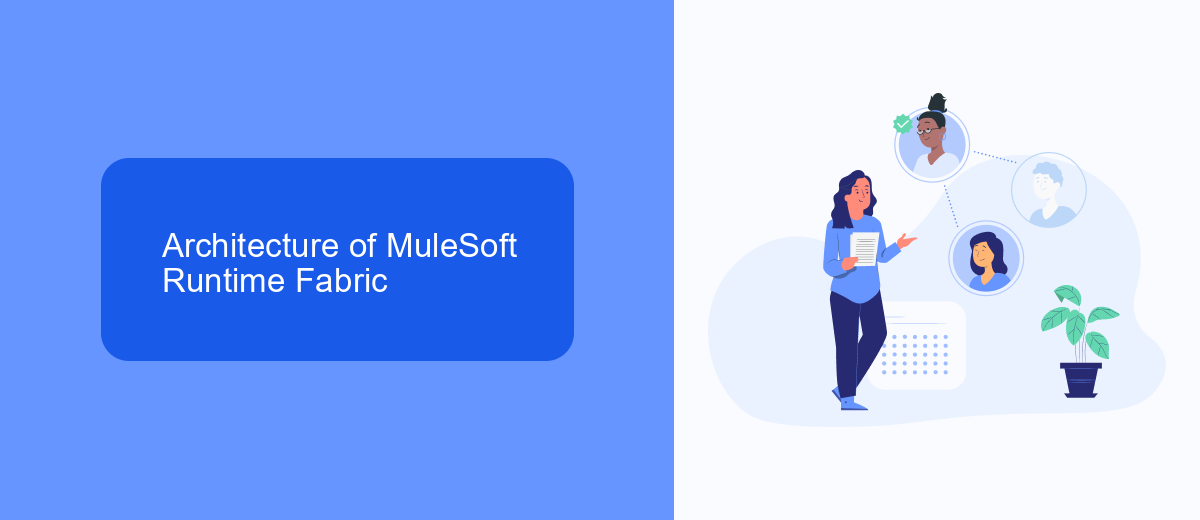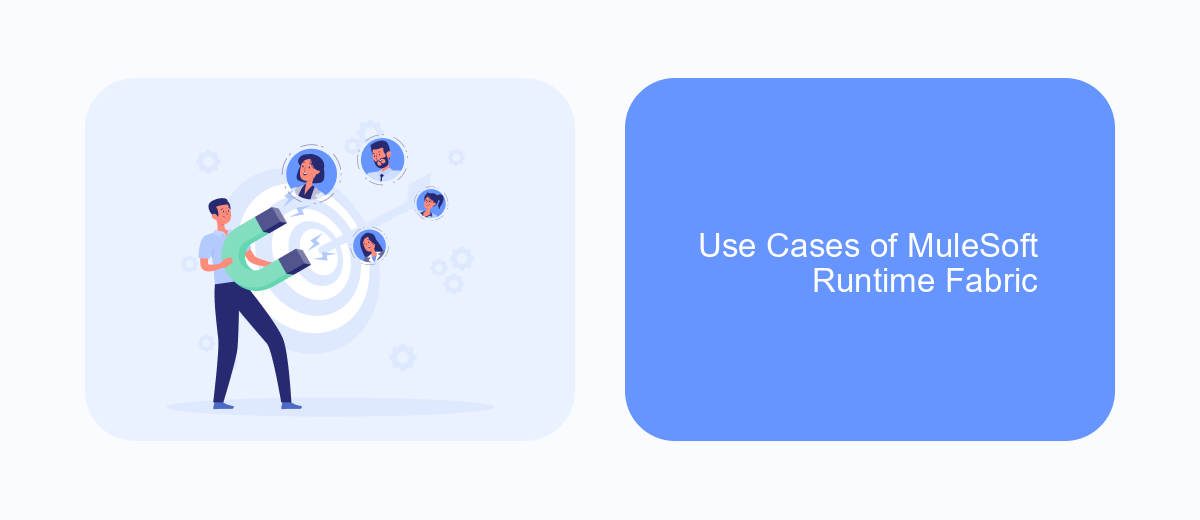MuleSoft Runtime Fabric is a versatile, container-based service designed to enhance the deployment and management of Mule applications across various environments. By leveraging Kubernetes and Docker technologies, it provides a unified platform that ensures scalability, reliability, and seamless integration. This article explores the key features, benefits, and practical applications of MuleSoft Runtime Fabric, demonstrating its pivotal role in modern enterprise architecture.
What is MuleSoft Runtime Fabric?
MuleSoft Runtime Fabric is a container service that allows you to deploy and manage Mule applications across various environments, whether on-premises, in the cloud, or in a hybrid setup. This flexibility ensures that your integration solutions can be scaled and managed efficiently, regardless of the underlying infrastructure.
- Supports both cloud and on-premises deployments
- Ensures high availability and scalability of Mule applications
- Offers centralized management and monitoring
- Provides built-in security features
By leveraging MuleSoft Runtime Fabric, organizations can streamline their integration processes, reduce operational complexities, and improve overall performance. For instance, services like SaveMyLeads can be easily integrated, enabling seamless data synchronization and automation across different platforms. This ensures that businesses can maintain efficient workflows and stay agile in a rapidly evolving digital landscape.
Architecture of MuleSoft Runtime Fabric

MuleSoft Runtime Fabric is a container service that allows you to deploy and manage Mule applications across various environments, whether on-premises or in the cloud. It leverages Kubernetes to orchestrate containerized Mule runtimes, providing a scalable and resilient infrastructure. The architecture consists of multiple components including the Control Plane, which manages deployments and configurations, and the Data Plane, which handles the execution of Mule applications.
The Control Plane enables centralized management and monitoring, ensuring seamless deployment and lifecycle management of Mule applications. It integrates with various services to streamline the setup and maintenance of integrations. For instance, SaveMyLeads can be used to automate lead data integration across different platforms, enhancing the efficiency of your workflows. The Data Plane, on the other hand, ensures high availability and performance by distributing workloads across multiple nodes, providing fault tolerance and load balancing capabilities.
Benefits of MuleSoft Runtime Fabric

MuleSoft Runtime Fabric offers a multitude of benefits that enhance the efficiency and flexibility of managing APIs and integrations. By leveraging this platform, organizations can streamline their operations and achieve greater scalability.
- Enhanced Scalability: MuleSoft Runtime Fabric allows for seamless scaling of applications across multiple environments, ensuring consistent performance even during peak times.
- Improved Security: The platform provides robust security features, including encryption and access controls, to protect sensitive data and ensure compliance with industry standards.
- Operational Efficiency: With its intuitive interface and automated processes, MuleSoft Runtime Fabric reduces the complexity of managing integrations, allowing teams to focus on strategic initiatives.
- Hybrid Deployment: The platform supports both cloud and on-premises deployments, offering flexibility to meet diverse business needs and regulatory requirements.
- Integration with SaveMyLeads: For businesses using SaveMyLeads, MuleSoft Runtime Fabric facilitates smooth integration, enabling automated lead management and data synchronization across various platforms.
Overall, MuleSoft Runtime Fabric empowers organizations to optimize their API management and integration processes, leading to increased agility and improved business outcomes. Its comprehensive feature set ensures that businesses can adapt to changing demands and maintain a competitive edge in the market.
Use Cases of MuleSoft Runtime Fabric

MuleSoft Runtime Fabric is a versatile solution designed to enhance the deployment and management of Mule applications across various environments. It offers a unified platform that simplifies the complexities associated with hybrid cloud and multi-cloud deployments.
One of the primary use cases for MuleSoft Runtime Fabric is in the seamless integration of disparate systems. By leveraging the platform, organizations can efficiently connect on-premises and cloud-based applications, ensuring smooth data flow and operational consistency.
- Hybrid Cloud Deployments: Facilitate the integration of on-premises and cloud applications.
- Multi-Cloud Strategy: Manage and deploy applications across multiple cloud providers.
- Enhanced Security: Ensure data security and compliance across environments.
- Scalability: Easily scale applications to meet growing business demands.
- Operational Efficiency: Reduce operational overhead with centralized management.
For businesses looking to streamline their integration processes, services like SaveMyLeads can be particularly beneficial. SaveMyLeads automates the transfer of leads from various sources to your CRM, complementing the capabilities of MuleSoft Runtime Fabric by optimizing data integration and workflow automation.
Comparison with other Integration Platforms
MuleSoft Runtime Fabric stands out among integration platforms due to its robust capabilities and flexibility. Unlike traditional platforms, MuleSoft offers a hybrid integration approach, enabling seamless connectivity across on-premises and cloud environments. This ensures businesses can integrate their disparate systems efficiently. On the other hand, platforms like SaveMyLeads focus on specific automation tasks, providing a more streamlined, user-friendly interface for setting up integrations without extensive technical knowledge. This makes SaveMyLeads ideal for small to medium-sized businesses looking for quick and easy integrations.
In comparison to other enterprise-grade platforms such as Dell Boomi or Informatica, MuleSoft Runtime Fabric offers more comprehensive support for microservices and containerized deployments. This is crucial for organizations adopting modern DevOps practices. Additionally, MuleSoft’s Anypoint Platform provides extensive API management features, which are essential for maintaining secure and scalable integrations. While other platforms may offer similar capabilities, MuleSoft's unified approach to API-led connectivity and its strong community support make it a preferred choice for large-scale enterprise integrations.
FAQ
What is MuleSoft Runtime Fabric?
How does MuleSoft Runtime Fabric enhance deployment flexibility?
What are the key benefits of using MuleSoft Runtime Fabric?
Can MuleSoft Runtime Fabric integrate with other automation tools?
What are the prerequisites for installing MuleSoft Runtime Fabric?
If you use Facebook Lead Ads, then you should know what it means to regularly download CSV files and transfer data to various support services. How many times a day do you check for new leads in your ad account? How often do you transfer data to a CRM system, task manager, email service or Google Sheets? Try using the SaveMyLeads online connector. This is a no-code tool with which anyone can set up integrations for Facebook. Spend just a few minutes and you will receive real-time notifications in the messenger about new leads. Another 5-10 minutes of work in SML, and the data from the FB advertising account will be automatically transferred to the CRM system or Email service. The SaveMyLeads system will do the routine work for you, and you will surely like it.
